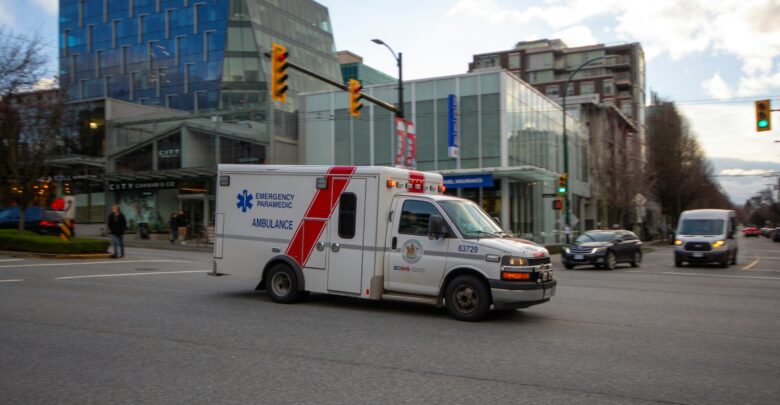 Ewan Streit
Ewan StreitIn Canada, approximately 60,000 residents each year suffer from a cardiac arrest incident outside of hospital boundaries, according to Matthew Douma, a professor in the faculty of medicine and dentistry. For the family, this can be traumatic and difficult, Douma said.
“It’s usually [their] loved ones who have to respond and initiate [their] resuscitation.” Typically this involves performing cardiopulmonary resuscitation (CPR), Douma said.
Douma’s PhD analysis focused on the experiences of families whose members have experienced cardiac arrest. In his research he partnered with survivors of cardiac arrest and the family members of survivors and non-survivors. According to Douma, there needs to be more of a focus on family-centered care.
“Co-design should be a core component of all of our health service design, delivery, and evaluation,” Douma says
As part of his analysis, Douma reviewed the approaches and training executed by paramedics when responding to cardiac arrest incidents. His study group represented more than 80 per cent of Canada’s paramedic population.
He noticed that no health care providers “have a robust family centre care suite,” and that there is a disparity with how primary responders deal with incidents like these.
“Some of [the paramedics] make the family leave their own house so that they can take care of their loved one,” he said. Others “will allow one family member to go into the ambulance and others will not,” Douma said.
In several cases, Douma thinks that “absolutely nothing” was done for the families of the patients.
Douma’s goal is to improve family-centered care through participatory design — a partnership with all parties who are directly involved in the situation. This includes the survivors of cardiac arrest incidents and their families, as well as the families of deceased cardiac arrest patients.
According to Douma, both “patient and public involvement” should be deemed a necessary part of health care. “Whether it’s addictions in mental health care, primary care, care of elders, or cardiac arrest care, there should be patients and public involvement.”
“Co-design should be a core component of all of our health service design, delivery, and evaluation,” Douma said.
Douma developed a memory aid for health care professionals to use during cardiac arrests
Through literature reviews and interviews with cardiac arrest patients and their families, Douma developed “rigorous practice guidelines” for health-care professionals. From this, Douma and those involved “came up with a very easy memory aid.”
The memory aid is the first six letters of the alphabet: ABCDEF. It represents the procedural approach for how health-care professionals should tackle patient cases. This memory aid is useful in fast-paced environments as, according to Douma, in such environments it’s common to “default to our lowest level of training.”
In the acronym, A stands for assess, B stands for being aware of the patient’s condition, C stands for choice, D stands for do, E stands for evaluate, while F, Douma’s main focus, stands for follow-up/family.
Furthermore, Douma said “policy and procedure guidelines,” have also been implemented in Emergency Medical Services (EMS) as a way to gain more family involvement in differing levels of crises.
“We developed some practical tools to help health-care professionals go about meeting the care needs of families who experienced cardiac arrest, either outside or inside the hospital,” Douma said.
Douma strongly encourages everyone to “learn how to save a life” through getting first aid or CPR training.
“Statistically, the odds are that you’ll be responding [to] your own loved ones.”




